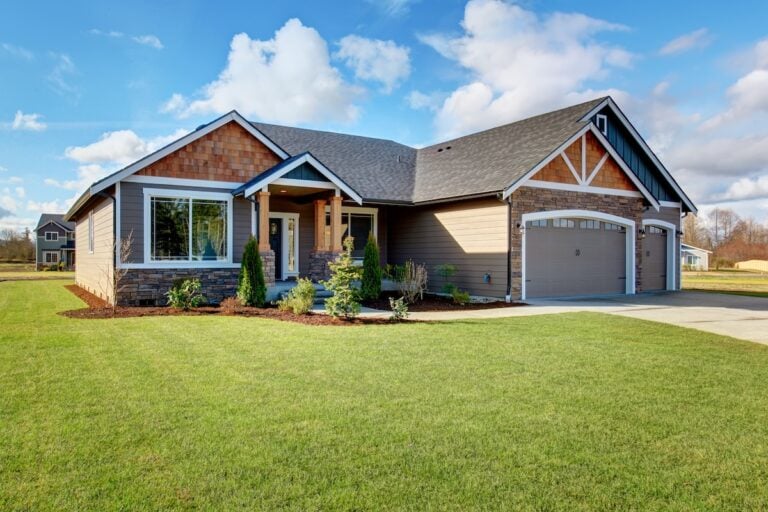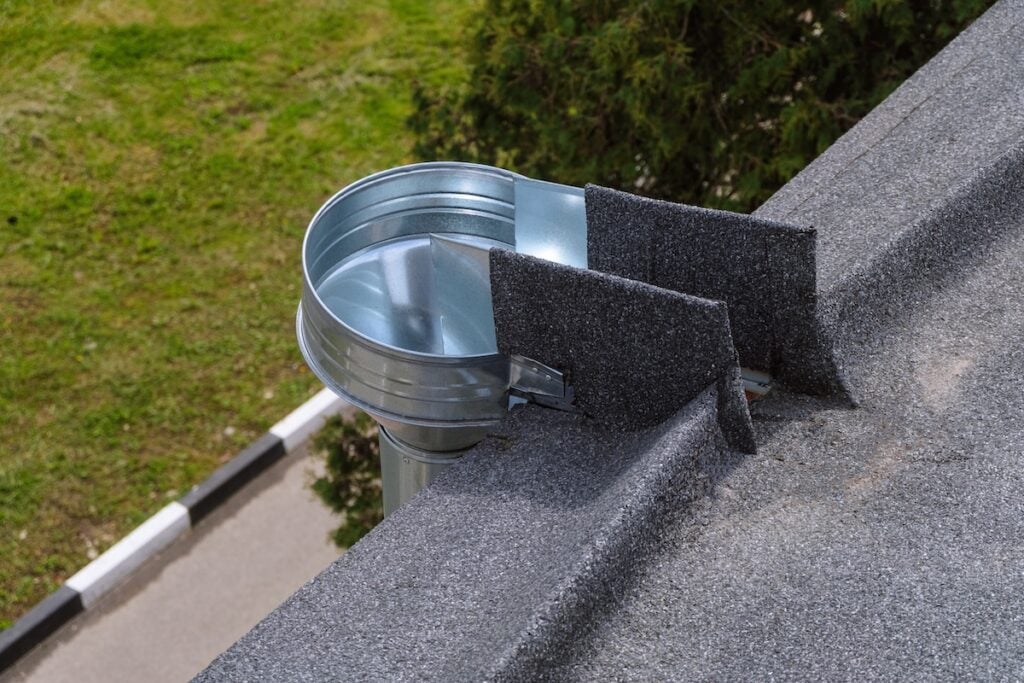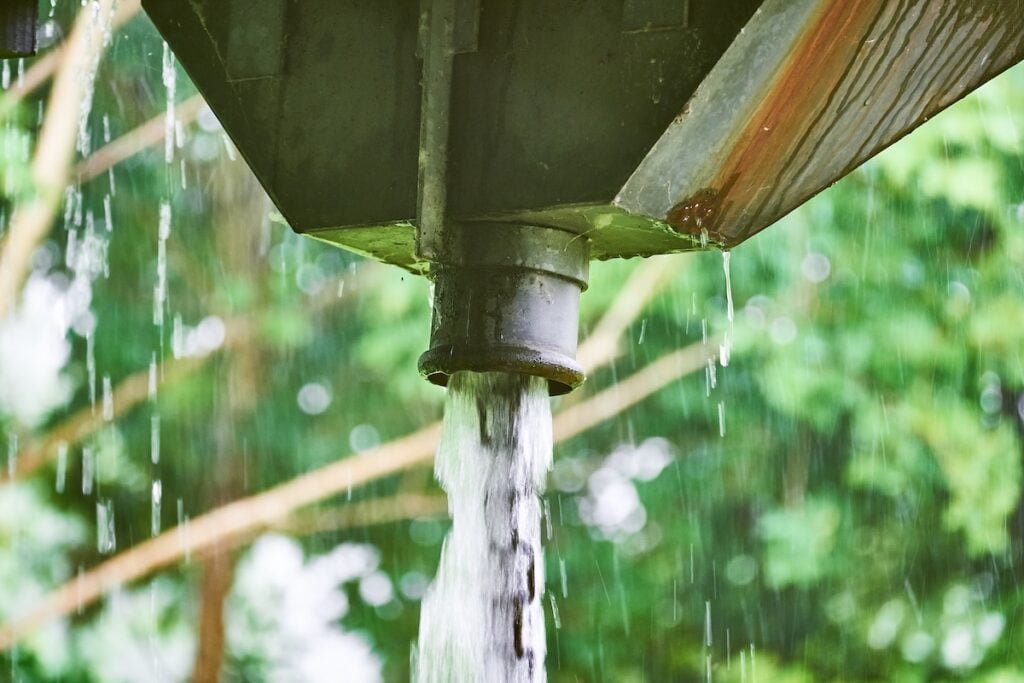
6 Min Read

If you’ve noticed rectangular or circular openings on the edge of flat or sloped building roofs, there’s a good chance you’ve spotted a roof scupper. These rather unassuming components play a crucial role in protecting your building from water damage.
Wondering how they work, why they’re important, or whether your roof could benefit from one? Here’s what we’ll cover in this blog post:

A roof scupper is an opening, typically rectangular or circular, installed along the edge of a roof to allow water to drain from the surface. It is designed to safely direct rainwater or melted snow away from flat or low-sloped roofs via downspouts or splash blocks. This drainage system helps prevent water pooling, reducing the risk of damage to the roof, walls, and foundation.
Water flows toward the scupper through a slight slope in the roof or through internal channels. Once the water reaches the scupper opening, it is discharged outside the building, ensuring proper runoff and protecting the structure from potential water damage.
Roof scuppers come in various designs and sizes to cater to different roof styles and water drainage needs. Here are the main types:

Curious why roof scuppers are essential for your building? Here are five game-changing advantages:
Standing water is one of the main culprits behind the premature failure of flat roofs. When water accumulates on the surface, it increases the risk of leaks as it seeps into even the smallest cracks or weak spots. Over time, this can lead to mold growth and seriously compromise the structural integrity of the roof. Scuppers are designed to provide an effective drainage solution by directing water off the roof, preventing pooling and ensuring the system stays dry and functional. By installing scuppers, you’re taking a proactive step toward protecting your flat roof and avoiding costly repairs or replacements in the future.
Improper drainage doesn’t just affect your roof—it can have devastating consequences for your building’s foundation. Water that isn’t properly redirected can accumulate around the base of the structure, leading to issues like soil erosion, foundation cracks, or basement flooding. Over time, this can jeopardize the safety and stability of the entire building. Scuppers provide a simple yet highly effective way to guide water away from the foundation, reducing the risk of damage and keeping your property safe from water-related issues.
Water pooling and poor drainage can lead to significant wear and tear on your roof, shortening its lifespan and increasing the frequency of repairs. By ensuring that water flows away efficiently with the help of scuppers, you can minimize damage caused by prolonged exposure to moisture, such as cracking, blistering, or deterioration of roofing materials. This means fewer unexpected repair bills, lower maintenance costs, and a longer-lasting roofing system overall. Investing in scuppers now can save you a substantial amount of money in the long term.
Scuppers are not only functional but also environmentally friendly. When paired with rain collection systems, they can channel runoff water into tanks or barrels for reuse. This collected water can be used for irrigation, cleaning, or other eco-conscious applications, reducing your reliance on municipal water supplies. By incorporating scuppers into your roof design, you’re not only protecting your property but also contributing to sustainable water management practices. It’s a small change that can have a big impact on both your wallet and the planet.
No two buildings are exactly alike, and scuppers can be tailored to meet the unique requirements of any structure. Available in a wide range of styles, sizes, and materials, scuppers can be customized to match the design and functionality of your roof. Whether you’re working on a residential property or a large commercial roofing project, there’s a scupper solution that will seamlessly integrate into your roofing system while enhancing its performance. With endless options for customization, you can ensure that your scuppers meet both aesthetic and practical needs.

We know that there are a lot of different roof types and each one of them require a particular drainage system that works the best. While scuppers are most common on commercial and flat-roofed properties, homes with complex roofing systems or water pooling issues can also benefit. Here are a few signs your roof may need a scupper:
If you notice water collecting on your roof or in specific areas of your property after it rains, this could indicate poor drainage. Over time, frequent pooling can weaken structural materials and cause significant damage if left unaddressed. That’s why having a roofing contractor that you can rely on to ensure that the drainage system of your roof works perfectly is a great way to lengthen its correct functionality.
Water damage often appears as stains or discoloration on your walls and ceilings. Mold or mildew growth is another common indicator of ongoing moisture issues. These signs suggest that water is not being properly drained away, potentially compromising the integrity of your property.
Roofs with minimal slope or completely flat designs are prone to drainage problems if they lack the necessary systems, such as gutters, downspouts, or drains. Without these, water can accumulate, leading to leaks, structural damage, or even roof collapse in severe cases.
When it comes to roof scuppers, even the smallest detail can make a big difference in protecting your property from water damage. At Kingfisher Roofing, our team of experienced roofers brings over 20 years of expertise, high-quality materials, and a commitment to exceptional service to every project. Whether you need a new installation, repair, or replacement, we ensure durable, reliable solutions tailored to your building’s unique needs.
Don’t leave your roofing needs to chance—trust the proven professionals at Kingfisher Roofing. Contact us today to schedule your comprehensive inspection and experience the difference of working with a team that puts your satisfaction first!